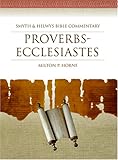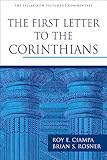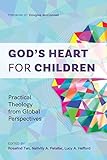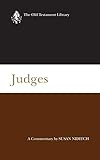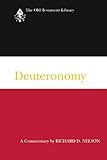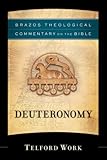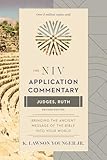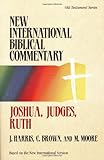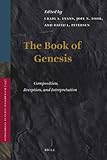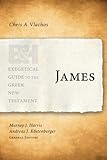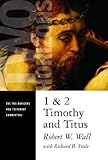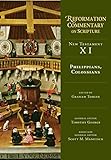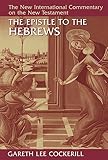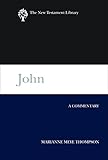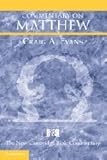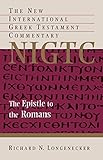MARC details
| 000 -LEADER |
|---|
| fixed length control field |
04939nam a22001817a 4500 |
| 005 - DATE AND TIME OF LATEST TRANSACTION |
|---|
| control field |
20240628123000.0 |
| 007 - PHYSICAL DESCRIPTION FIXED FIELD--GENERAL INFORMATION |
|---|
| fixed length control field |
ta |
| 008 - FIXED-LENGTH DATA ELEMENTS--GENERAL INFORMATION |
|---|
| fixed length control field |
180628s2015 sa ||||fom| | 00| e eng d |
| 040 ## - CATALOGING SOURCE |
|---|
| Original cataloging agency |
ZA-BrSAT |
| Transcribing agency |
ZA-BrSAT |
| 100 ## - MAIN ENTRY--PERSONAL NAME |
|---|
| 9 (RLIN) |
388 |
| Personal name |
Woods, David Buchanan |
| 245 ## - TITLE STATEMENT |
|---|
| Title |
Jews and Gentiles in the Ecclesia: |
| Remainder of title |
Evaluating the Theory of Intra-Ecclesial Jew-Gentile Distinction |
| 260 ## - PUBLICATION, DISTRIBUTION, ETC. |
|---|
| Place of publication, distribution, etc. |
Johannesburg |
| Name of publisher, distributor, etc. |
South African Theological Seminary Press |
| Date of publication, distribution, etc. |
February, 2015 |
| 300 ## - PHYSICAL DESCRIPTION |
|---|
| Extent |
173 |
| Other physical details |
PDF |
| Dimensions |
A4 |
| Accompanying material |
Bibliography |
| 502 ## - DISSERTATION NOTE |
|---|
| Degree type |
Master of Theology (Mth) |
| Name of granting institution |
South African Theological Seminary |
| Year degree granted |
2015 |
| Supervisors |
Domeris, William R. |
| 520 ## - SUMMARY, ETC. |
|---|
| Summary, etc. |
Elements of the Jewish faith tradition, including Torah observance and other Jewish practice, appear to be increasingly common among believers in Jesus. This development is troubling many Christians who, for doctrinal and practical reasons, believe it is heretical and brings division within the body of Christ (ecclesia). The objective of this research is to critically examine the biblical case against making a distinction between Jews and Gentiles within the ecclesia, considering the narrative of Acts 10:1–11:18, 15:1–28:31, and a key metaphor in Ephesians 2:14–16. Does the text validate or refute the notion that the ecclesia should make a distinction between its Jewish and its Gentile members? Three specific problems were addressed in five research papers for this compilation thesis, each employing methods of biblical exegesis and logical argumentation. The three research problems addressed were: i) the interpretation of Peter’s vision; ii) the evaluation of three key texts which appear to refute the theory of intra-ecclesial Jew-Gentile distinction; and iii) the example of the very early ecclesia with regard to making distinction between Jews and Gentiles. Peter’s vision, in Acts 10:9–16, was shown to have a single meaning: Gentiles have been purified by God. Its message had nothing to do with unclean foods, so the popular Christian interpretation that the vision signalled the termination of Jewish dietary laws (and the Mosaic Law in general) is not substantiated. In Acts 11:12, the Spirit told Peter to accompany Cornelius’ messengers without dispute. There is no sound basis for interpreting the Spirit’s command to mean that Peter should go, ‘making no distinction’ between the Gentiles of Cornelius’ household and Peter’s Jewish kinsmen. Acts 11:12, therefore, does not eradicate the prevailing distinction between Jews and Gentiles nor the theological significance thereof. Similarly, Peter’s comment that God made ‘no distinction’ between Gentile and Jewish Jesus believers when he purified their hearts by faith (Acts 15:9) cannot be generalised to mean that the ecclesia is an undifferentiated mix of Jews and Gentiles. The context, including direct speech of Peter and James, constrains the interpretation to a restricted, soteriological sense: vi there is ‘no distinction’ between them in terms of how they are saved. These findings are further validated throughout the remainder of Acts, where the leaders of the ecclesia, especially Paul, teach and practise making distinction between Jewish and Gentile believers in Jesus by their varied obligations to Torah. Finally, Paul’s metaphor for the ecclesia in Ephesians 2:15, ‘one new man,’ is examined to determine which of two contradictory interpretations he intended: homogenous uniformity or compound unity. The certain outcome is the latter: the ecclesia comprises Jesus believing Jews and Gentiles without compromising Jewish particularity or heritage. Such ‘unity with distinction’ of former enemies is achieved by Christ without erasing those distinctions, and Messianic Jews form a bridge between Israel and the nations. The studies conclude that the text and teaching of Acts 10:1–11:18, 15:1–28:31, and Ephesians 2:14–16 continue the biblical norm for making distinction between Jews and Gentiles within the ecclesia. Thus, the biblical case against making a distinction between Jews and Gentiles within the ecclesia is flawed. Major implications of the conclusion include doctrines concerning the identity and election of Israel, the Christian church’s relation to Israel, the structure of the church (as a twofold unity composed of Jews and Gentiles), and the varied applicability of Torah (and Jewish practice) for Jewish and Gentile believers in Jesus. Making distinction between Jews and Gentiles in the ecclesia results in: i) a clear and hermeneutically consistent eschatology; ii) reconciliation of seemingly self-contradicting actions and writings of Paul; iii) protection of Gentile believers in Jesus from unnecessarily seeking to become Jewish; and iv) a unity of Jewish and Gentile believers as complementary (yet distinct) parts of the whole body of Christ, each a blessing to the other in fulfilment of God’s promise to Abraham. |
| 650 #0 - SUBJECT ADDED ENTRY--TOPICAL TERM |
|---|
| 9 (RLIN) |
30 |
| Topical term or geographic name entry element |
Church |
| 942 ## - ADDED ENTRY ELEMENTS (KOHA) |
|---|
| Source of classification or shelving scheme |
Dewey Decimal Classification |
| Koha item type |
Thesis |

